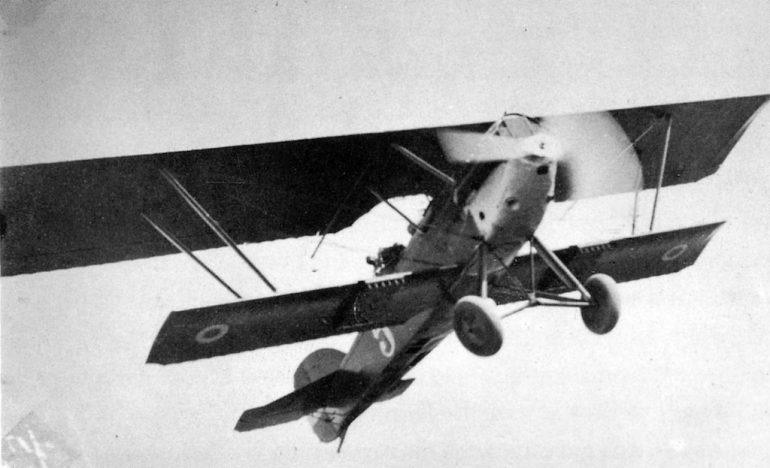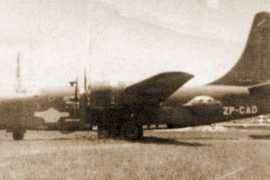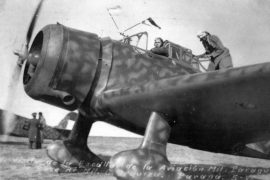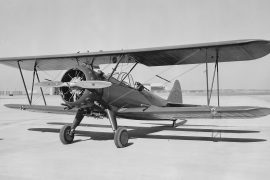The Paraguayan Military Aviation School was founded on February 22, 1923 at Campo Grande, in the outskirts of the capital Asunción, with a few biplanes which survived the revolution of the previous year. In 1926, a French Military Mission arrived in the country with the aim of re-organizing the aviation school, and for that purpose, the government acquired a handful of French-built airplanes. The Chief of that mission was Colonel Coulet, being Major Louis Fromont the pilot officer in charge of the flight instruction and Sergeant Robert Pommier of the maintenance of the aircraft. The following year, three Hanriot HD-32, a Morane-Saulnier M.S.35 and a M.S.139 arrived in Asunción for the school, and between 1928 and 1929, seven Wibault 73 fighters and six Potez 25 A-2 bombers were also purchased, which were assigned the serials 1 to 6.
Regarding the Potez bombers, the original order was for seven airplanes, of which seven were shipped from the factory to Uruguay’s capital, Montevideo, from where they would be transported to their final destination in Asunción. However, one of the airplanes was lost while being unloaded from the ship and it ended at the bottom of the bay. Hence, only six arrived in Paraguay in 1928. Once at Campo Grande, the airplanes were intensively used to train bomber pilots and gunner-observers. From 1928 to 1931, a total of 25 pilots and 18 aviation mechanics graduated from the Military Aviation School. One Potez 25 was lost in an accident in Campo Grande in 1929, during a training flight. Luckily, both crew members survived, but the aircraft was declared a total loss.
At War
The dispute between Paraguay and Bolivia for the Chaco Region turned for the worse during the late 20s. Bolivia has been penetrating the area very slowly since 1928, establishing several small garrisons, while the Army Aviation Corps even built some airstrips as well. In June, 1932, when the full-scale war finally started, Bolivia occupied almost half of the Chaco. At that time, the Paraguayan Air Arm did not have a single airstrip in the region. So, the first one was built in a place called Isla Taguató, 150 kilometers from the battlefront. Three Potez 25s and a pair of Wibault 73 were immediately deployed there, with the necessary ground crews. Reconnaissance flights started with the Potez, being escorted by the Wibault fighters.
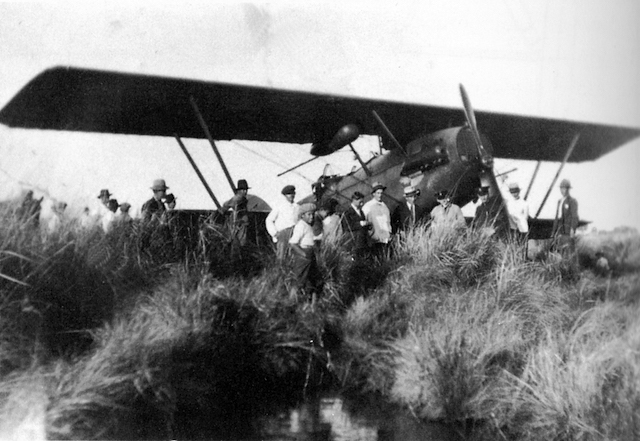
The Paraguayan Army headquarters was established in the fortress of Isla Poí, and a second airstrip was built there. Shortly after, all the Potez and Wibault aircraft were redeployed this new base, which was even closer to the battlefront. More Potez and Wibault were sent from Asunción to Isla Poí in the following days, so a total of 8 aircraft were now based at the Chaco region. The Potez belonged to the First Bombing and Reconnaissance Squadron.
In October, 1932, a Bolivian Breguet 19 attacked a pair of Paraguayan Potez 25 which were bombing the Bolivian positions at the Arce garrison. Both Potez counterattacked the enemy plane, which returned to its base. Arce was also taken successfully by Paraguayan troops on October 23. The following Paraguayan target was the Bolivian garrison in Saavedra, which was also heavily bombed by the Potez. During a reconnaissance mission, a Paraguayan Potez piloted by the 1st. Lt. Trifón Benitez Vera and Captain Ramón Avalos Sánchez as the gunner, was shot down by a Vickers Scout piloted by Capt. Rafael Pabón, on December 4. The Potez crashed near Saavedra and both crew members died.
In the meantime, eight new Potez 25 T.O.E were purchased from France and arrived in Asunción in crates at the end of 1932, being serialed 7 to 14. Once assembled, they were immediately deployed to the Chaco Region. A second Bombing and Reconnaissance Squadron was then formed with these airplanes, which by then had been nicknamed “Panzones” or “Big Bellies” due to their thicker fuselage that accommodated additional fuel tanks in the lower section.
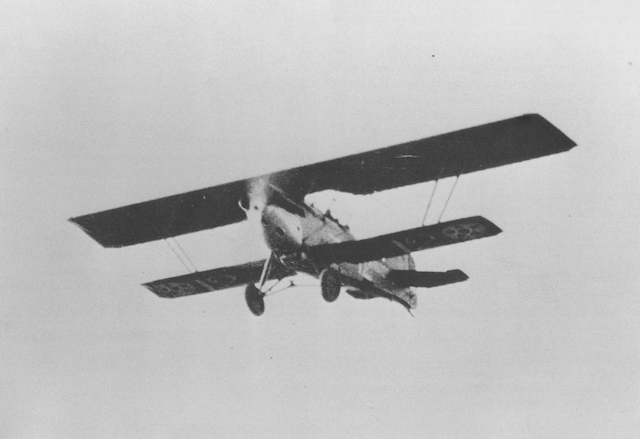
In January, 1933, the Bolivian Army attacked the Paraguayan fortress of Nanawa. Since the Paraguayan troops at Nanawa were completely isolated, four Potez 25 were prepared to be used as cargo planes in order to provide the necessary ammunitions to the troops. All the machine guns and bomb racks were removed from the aircraft; the only weapon left was the pilot’s machine gun. All the ammunitions were loaded in the gunner cockpit. A total of 115 kg of ammunition were carried in bags by each plane. The four Potez 25 took off from Isla Poí and flew south to Nanawa where they landed on the airstrip that was under heavy artillery fire from the Bolivians. The Potez pilots parked their planes near the end of the airstrip, where ground crews unloaded the bags. As soon as they were done, all aircraft took off again and flew back to Isla Poí to repeat the operation. A total of four flights were performed, carrying a total of 1,610 kg of ammunition. This raid saved Nanawa from being captured by Bolivian troops. The Potez were piloted by Lt. Isidoro Jara, 1st. Lt. Carmelo Peralta, Capt. Atilio Ibáñez Rojas and Capt. Juan González Doldán. As a result of the raid, three of the aircraft were damaged, but after the battle, they were dismantled and taken to Asunción, where they were repaired.
It is worth mentioning that the President of Paraguay at that time, Dr. Eusebio Ayala, flew in some of the Potez aircraft during his visits to the battlefront, when transport planes were not available.
In 1933, the Paraguayan Potez began to be escorted by Fiat C.R.20bis fighters of the 11th Fight Squadron which replaced the aging Wibault 73s. On June 3, 1933, a total of six Potez 25 escorted by two Fiat fighters took off from Isla Poí in order to bomb the Bolivian fortress at Platanillos. Each Potez bomber carried 12 bombs of 14 kg each. There was a huge troop concentration at Platanillos which planned to attack the Paraguayan positions at Herrera. The mission was a complete success because the fortress at Platanillos was completely destroyed and many Bolivian soldiers were killed. In this raid, the Bolivian aircraft were mysteriously absent. All Potez and Fiat airplanes returned to their base at Isla Poí, but the Potez piloted by 1st.Lt. Teófilo Fariña Sánchez and 2nd. Lt. Estanislao Arce as the gunner still had two bombs hanging from the airplane’s racks. The crew did not notice this potential problem and when they landed, the bombs fell off and exploded, destroying the airplane. Both crew members were severely injured but they survived.
In August, 1933, two Potez 25 escorted by three Fiat fighters flew over Falcón, Gondra and Pirizal in order to observe the movements of the Bolivian troops. During the rest of that year, all the available Potez airplanes performed several reconnaissance missions over the garrisons at Herrera, Samaklay, Muñoz and Saavedra. The Paraguayan offensive attacks in Campo Vía in October,1933, were a complete success, capturing almost 9,000 Bolivian soldiers and enormous stocks of weapons. But the Bolivians took revenge in the Battle of Cañada Strongest, where 1,500 Paraguayan soldiers of the First Army Corps were encircled. The battle lasted 15 days (May 10 to 25, 1934) and three Potez were used to air-drop huge ice bars to the encircled ground forces, who were suffering terribly from thirst, the airplanes often flying at tree-top level. The aircraft were piloted by Lt. Benito Sánchez Leyton, Lt. Luis Tuya (two Uruguayan volunteers), and Lt. Arsenio Vaesken. In one of the raids, the Potez piloted by Lt. Sánchez Leyton received hundreds of shots, but he managed to return to the airstrip at Cabezón, where he landed safely. The ground crew there counted a total of 200 bullet holes on the plane, and 14 more in Sanchez Leyton’s parachute!
In June, 1934, three Potez bombed the Bolivian positions at Cañada El Carmen successfully. The Paraguayan Army took almost 7,000 prisoners at that place, plus a lot of weapons. During this battle, there was a huge dogfight between Paraguayan and Bolivian airplanes; Four Potez and two Fiat fought against eleven Bolivian Curtiss Ospreys and Hawks during approximately 20 minutes. Since the Potez were slower than the Curtiss planes, their salvation was to fly at tree-top level, where the Bolivian planes were completely ineffective. Due to this, all planes returned to their base safely.
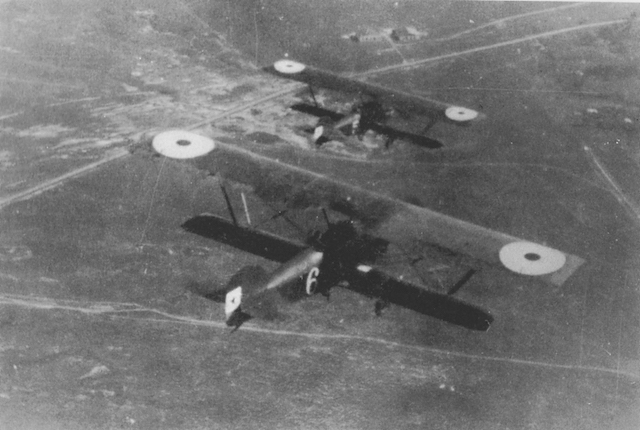
On July 4th, 1934, four Potez struck the Bolivian fortress of Ballivián from an altitude of 900 meters, dropping 40 bombs near the airstrip where seven Curtiss planes were parked. These Bolivian aircraft were severely damaged and they could not take off to defend the fortress. Another 80 bombs were thrown at the defensive positions around the fortress, destroying a fuel depot.
A very particular dogfight between a Paraguayan Potez and a Bolivian Osprey took place on August 12, 1934. The Potez was piloted by Capt. Carmelo Peralta and Lt. Rogelio Etcheverry as the gunner was on a patrol mission over the Florida sector when a Curtiss Osprey piloted by Major Rafael Pabón dove against the first aircraft. Unable to outpace the considerably faster Osprey, Capt. Peralta climbed in spirals, blasting away with his four Madsen machine guns. Frustrated, Maj. Pabón climbed over and dove again. Peralta then began to fly his plane at tree-top level; Pabón dove towards the Potez once again but this time, he was hit by the bullets of Lt. Etcheverry’s machine guns and fell out of control. Pabón’s Osprey crashed killing himself as well as his gunner, Sgt. Mario Calvo.
Due to the advance of the Paraguayan troops in the Chaco, several other airstrips were built, such as the ones in Picuiba, Camacho and Yrendagué. During September 1934, several Potez 25 escorted by Fiat fighters were deployed to the airstrip of Picuiba. On the 22nd, one Potez and two Fiats flew a reconnaissance mission over Algodonal when two Bolivian Ospreys attacked them. The Fiat fighters made the Osprey return to their base.
In October, 1934, all Paraguayan planes left Picuiba in order to bomb the Bolivian positions in Lobrego, El Carmen, Carandaity and Yrendagué.
By the end of 1934, Bolivia had been virtually pushed out of the Chaco and into the andean foothills. On December 12, 1934, two Bolivian Curtiss Hawks which were escorting a Junkers K.43 bomber, intercepted a Potez. The Hawk piloted by Major Beltrán shot down the airplane. Although the Potez was on fire, its pilot Lt. Vaesken managed to land the crippled bomber safely. Both crew members survived without any injuries although the airplane was completely destroyed by the fire.
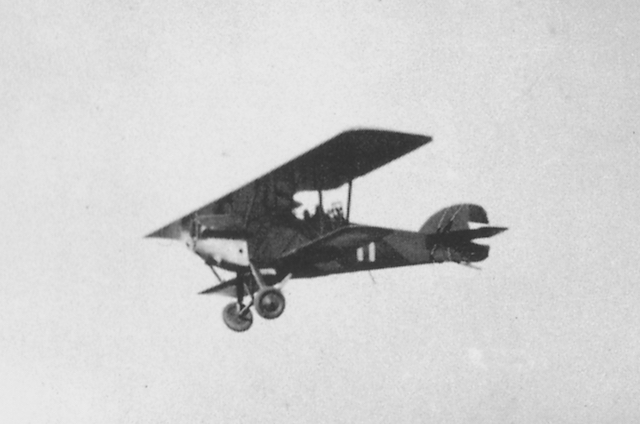
During the last months of the war, in 1935, the remaining Potez continued flying over the Bolivian positions in the andean foothills. They even bombed the Bolivian city of Charagua, which is north of the Parapití River. The four Potez that participated in this bombing raid took off from the Ybamirante airstrip, which was the furthest Paraguayan Air Arm base in the war.
The cease-fire finally came on 12 June, 1935. A day before, four Potez still carried out 15 sorties over Bolivian troop concentrations.
Two Potez bombers escorted the Paraguayan Breda 44 transport plane to the city of Villamontes on 15 June, 1935 for a fraternity meeting with Bolivian pilots, and for the signature of the armistice.
The Postwar Years
Of the 14 Potez 25 purchased, only four survived the war. Two of them were shot down in aerial combat, one was lost in an accident before the war and the remaining seven aircraft were either lost in accidents during the campaign or withdrawn from service due to the lack of vital spare parts.
The four surviving Potez participated in the Victory Parade organized by the government of President Eusebio Ayala to honor the Paraguayan troops on August 20, 1935. These airplanes were kept in active service with the First Bomber Squadron in the Paraguayan Air Arm. A Presidential Decree of July 25, 1939 gave the “Chaco Cross” medal to the Paraguayan Air Arm for its heroical participation in the war. The medal was set by the President Dr. Félix Paiva, on the Paraguayan Air Arm flag which was hanging from a Potez 25 propeller.
On September 7, 1940, President José Félix Estigarribia and his wife prepared to take his customary 15-minute plane ride to San Bernardino. The Breda transport plane was to have been used, but Estigarribia diverted it to the Chaco region to ferry an ailing veteran. Major Carmelo Peralta was ordered to prepare a Potez 25 in order to transport the President and the first lady. A few minutes after taking off, the plane crashed near the city of Altos, killing its occupants. Examinations of the remains revealed that the propeller shaft had snapped.
The other three Potez were placed in reserve until 1943 when they were retired from active service. Unfortunately none of them survived to be preserved in a museum. In 2016, however, the wreckage of the Potez 25 T.O.E. serial 13 were found at Cañada El Carmen, including the undercarriage, the engine and other pieces, which are preserved at the Fortín Boquerón Museum.
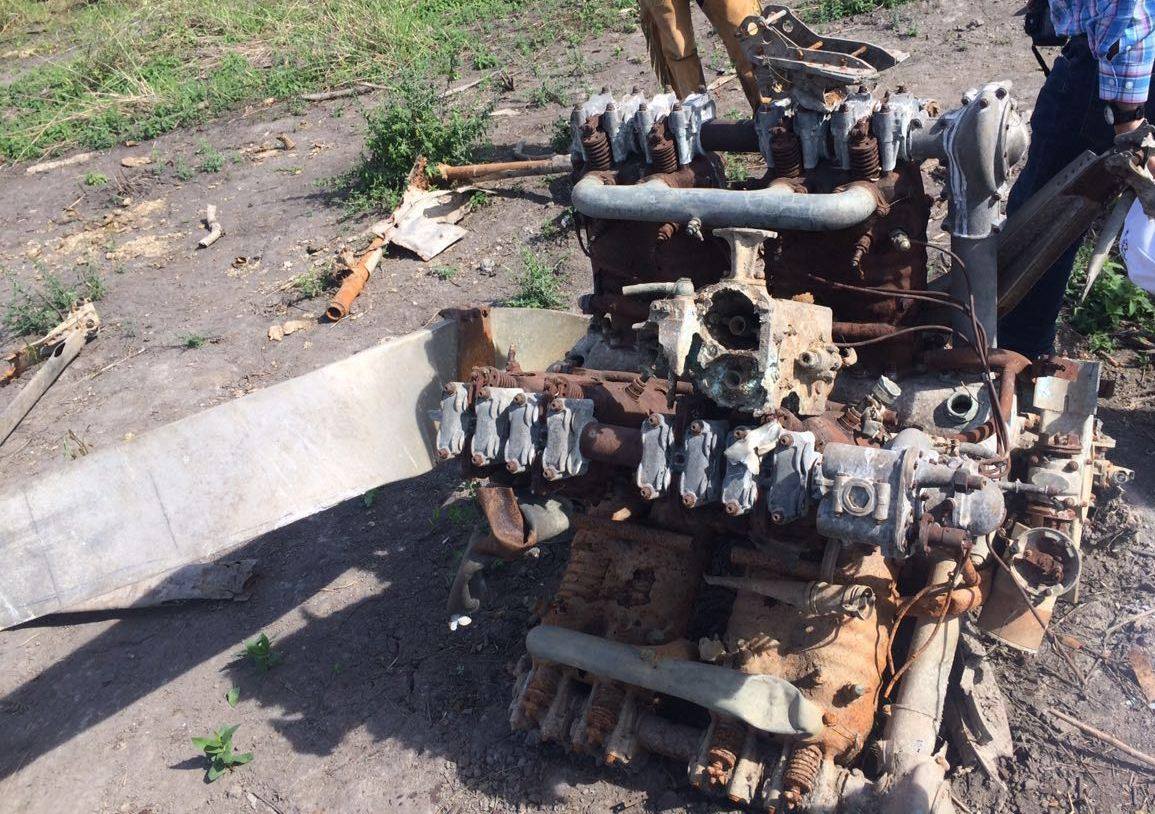
Colors, Engines and Weapons
During their service life with the Paraguayan Air Arm, all the Potez 25s were painted in very dark green overall, except the engine cowling, which was kept in its natural aluminum color. The Paraguayan flag colors were painted in the rudder with a yellow star on the white stripe. The Paraguayan roundels were painted on four positions on the wings. The serial number was painted on the fuselage right behind the gunner’s cockpit in white numbers. After the war, the four remaining aircraft were all painted in aluminum dope.
The Potez 25 was fitted with a water-cooled, 12-cylinder, Lorraine-Dietrich 12Eb engine of 450 HP, which gave the aircraft a top speed of 226 kph.
Its armament consisted of one fixed Vickers machine gun for the pilot, two mobile Madsen machine guns on a swiveling mount for the gunner, one semi-mobile Madsen machine gun installed on the gunner’s cockpit floor and two F.12X10 bomb racks installed under the wings, capable of carrying a total of 6 bombs of 14 kg in each rack.
Individual Aircraft History
| Type / Serial | T.O.C. | Battles | Final Fate |
|---|---|---|---|
| Potez 25 A-2 N°1 | October 1928 | Boquerón, Arce, Saavedra | Withdrawn from use in 1933. |
| Potez 25 A-2 N°2 | October 1928 | None | Written-off at Ñu-Guazú airbase in 1929. |
| Potez 25 A-2 N°3 | October 1928 | Boquerón, Arce, Saavedra, Nanawa | Withdrawn from use in 1933. |
| Potez 25 A-2 N°4 | October 1928 | Boquerón, Arce, Saavedra, Nanawa | Withdrawn from use in 1933. |
| Potez 25 A-2 N°5 | October 1928 | Boquerón, Arce, Nanawa, El Carmen, Ballivián, Charagua | Survived the war, withdrawn from use in 1943. |
| Potez 25 A-2 N°6 | October 1928 | Boquerón, Arce | Shot down on December 4, 1932. |
| Potez 25 T.O.E. N°7 | October 1932 | Nanawa, Cañada Strongest, El Carmen, Carandayty, Yrendagué. | Survived the war, written-off on September 7, 1940. |
| Potez 25 T.O.E. N°8 | October 1932 | El Carmen, Ballivián | Reserialed as N°15. Withdrawn from use in 1934. |
| Potez 25 T.O.E. N°9 | October 1932 | Platanillos | Survived the war, withdrawn from use in 1943. |
| Potez 25 T.O.E. N°10 | October 1932 | Platanillos, Cañada Strongest, Ballivián. | Withdrawn from use in 1934. |
| Potez 25 T.O.E. N°11 | October 1932 | Platanillos, El Carmen, Florida. | Survived the war, withdrawn from use in 1943. |
| Potez 25 T.O.E. N°12 | October 1932 | Platanillos, Falcón, Gondra, Pirizal, Ballivián | Withdrawn from use in 1935. |
| Potez 25 T.O.E. N° 13 | October 1932 | Platanillos, Falcón, Gondra, Pirizal, Ballivián | Shot down on December 12, 1934.* |
| Potez 25 T.O.E. N°14 | October 1932 | Platanillos | Written-off on June 3, 1933 at Isla Poí airbase. |
Bibliography
- Aircraft of the Chaco War, 1928-1935 By Dan Hagedorn and Antonio L. Sapienza. Schiffer Publishing Co., Atglen, PA, USA, 1997.
- Potez 25 by Pierre Cortet, Michel Ledet, Christophe Cony, Lucien Murareau and Antonio L. Sapienza. SARL LeLa Presse, Boulogne-sur-Mer, France, 1996.

